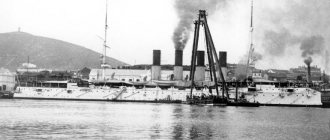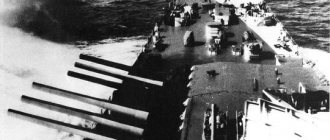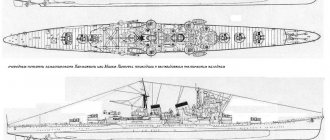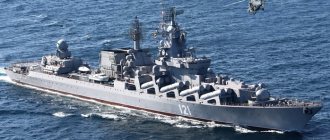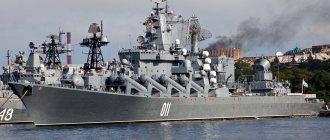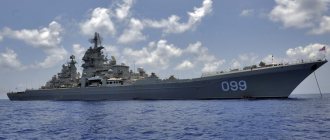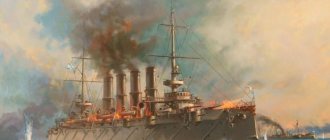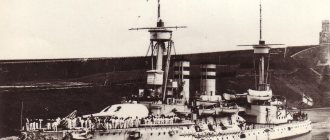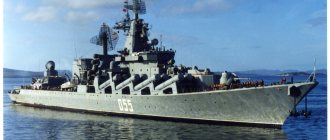Mission of Bishop Nicholas
The easiest way was to determine the identity of the donor, Bishop Nicholas (now this is the illustrious Equal-to-the-Apostles Saint Nicholas of Japan). An outstanding Russian spiritual figure in the field of missionary work, researcher, and translator devoted most of his life and service to Japan. Thanks to him, the Japanese Orthodox Church was created from scratch with its temples, iconography and choral singing. And during the Russo-Japanese War, Bishop Nicholas and the Russian Spiritual Mission supported Russian soldiers who were captured - they collected donations, sent them letters of consolation, books, textbooks, icons and even more than a hundred thousand eggs to celebrate Easter in 1905! Among the gifts was the Gospel, the printing of which Bishop Nicholas organized in Tokyo.
St. Nicholas of Japan.
In his diaries he wrote:
“The distribution of Gospels to prisoners of war has been completed. It was no small matter. One binding alone cost 68,000 copies of our works! 80 people worked for 70 days on the binding, and 150 women folded the sheets; 6 workshops worked together..."1.
One of the Gospels ended up in the hands of messenger Mikhailov in August 1905.
Of course, I was on fire: who is this person?
Dmitry Mikhailov in full dress after being promoted to ensign. 1904
Destroyer "Impeccable"
One of the ships of the Second Pacific Squadron, very little is known about its participation in the Battle of Tsushima. According to Japanese data, on the night of May 14-15, 1905, the cruiser Chitose and the destroyer Ariake overtook a Russian destroyer that had a malfunction in its vehicle. When the Russian ship, shot down in battle, began to sink, the Japanese ships left without saving people. The Russian destroyer, which died in an unequal battle with its entire crew, but never lowered its flag, as it later turned out, turned out to be “Impeccable”.
Salvation icon
It turned out that about 2,000 of our compatriots were kept in the camp in the city of Sendai. The signature “messenger” - a lower rank for assignments under a naval officer - could mean that Mikhailov was one of the participants in the Battle of Tsushima. However, the first requests to the archives did not bring results. The reason for this was my erroneous reading of the initial on the Gospel - as Y., and not as D. You can imagine my feelings when my next request received a response from the Russian State Archives of the Navy (St. Petersburg):
“... we inform you that <...> information about Yu. Mikhailov has not been identified. Additionally, we inform you that in the card index of prisoners of war, information was revealed about those who were in the Sendai camp: Mikhailov Alexander Pavlovich, born in 1879, sailor of the 1st class of transport "Irtysh", and Mikhailov Dmitry Filippovich, born in 1881, ensign for the mechanical part of the cruiser "Svetlana" "
And within a few days I discovered a whole dossier on Dmitry Mikhailov in the V.K. Arsenyev Museum of the History of the Far East - metrics, photographs, correspondence, newspaper clippings. All this was transferred by his relatives to the Vladivostok museum in the 90s of the last century. The most amazing exhibit is a note from the Kotlin newspaper from 1908 about the Battle of Tsushima and the tragic death of the cruiser Svetlana:
“Ensign Mikhailov, who was in the vehicle during the entire battle, was the last to get out of it; there were no life-saving equipment left on the upper deck. Not being able to swim well, he was undecided whether to throw himself into the water. On the deck lay the ship's icon of St. Nicholas the Wonderworker in a small icon case. He took it and threw himself into the water with it. Mikhailov was saved and keeps the icon as his savior.”
And then in my investigation, absolutely amazing events took place.
That same tiny (22x18 cm) icon of St. Nicholas the Wonderworker, a copy of which is kept in the temple of the same name on the territory of the Maritime University in Vladivostok.
Cruiser-yacht for the Grand Duke
In the appearance of this ship one could guess its French origin - a rounded ram protruding forward and rectangular windows in the sides. Created not for combat, but rather as a representative yacht for high-ranking persons, the 1st rank cruiser Svetlana, however, shared the fate of most ships of the Russian Imperial Navy and was lost in an unequal battle off Dazhalet Island in 1905.
The history of the creation of the 1st rank cruiser "Svetlana" began with the decision to build a minelayer for the Baltic Fleet, similar to the ships "Bug" and "Danube", which were part of the Black Sea Fleet. On March 24, 1893, the Main Directorate of Shipbuilding and Supply (GUKiS) sent a request to the Marine Technical Committee (MTK) to develop a design for a ship with a displacement of 800 tons, capable of carrying up to 300 mines. Soon, the MTK received a request from the Chief of the Fleet and Naval Department, Admiral General Grand Duke Alexei Alexandrovich, to arrange apartments for him on board the minelayer. This, as well as the requirement to increase the ship’s speed to 18 knots, led to the fact that in September 1893, senior shipbuilder E. E. Gulyaev submitted two projects with a displacement of 1560 and 2800 tons to the MTK for consideration. By that time, the Grand Duke expressed another wish - to build for him a yacht that could accompany the imperial yacht Polar Star to sea. The combat value of the ship no longer played a primary role. As a result, the displacement of the future “yacht” was increased to 4000 tons, and the ship received the status of a 1st rank cruiser.
In March 1895, the French project, located in Le Havre, was recognized as the winner of the competition. The French 2nd class armored cruiser Catinat, laid down at one of the company's factories in February 1894, was chosen as the prototype for the Svetlana project. The contract value was 685,000 francs. French engineers were supposed to deliver the ship by October 8, 1897.
The French 2nd class cruiser Protet to a certain extent became the prototype for the design of Svetlana. Photo source - kreiser.unoforum.ru
Ship structure
In the appearance of the cruiser, the influence of the French shipbuilding school was unmistakably discernible - a rounded, strongly protruding ram, a pronounced “sheer” hull in the bow, as well as square windows instead of round portholes.
The ship had a riveted steel three-deck hull. In its middle part, under the engine and boiler rooms, there was a double bottom, divided into sixteen compartments. The stem and sternpost were made of bronze. The steel sheathing in the underwater part was completely covered with teak boards in one layer, and there was a layer of felt between the wood and steel sheathing. A plating of 0.8 mm thick red copper sheets was laid on top of the boards (so that the underwater part of the hull would not become overgrown with shells and algae while sailing in warm seas), and 2 mm thick in the bow under the fairleads. Below the armored deck, six watertight bulkheads divided the hull into seven compartments.
Booking
The only protection for the cruiser from enemy shells was the armored deck, which had a sloping (or, as they said then, “carapace”) shape, which was very common in shipbuilding at that time. In the manufacture of the armored deck, especially soft armor steel was used, its thickness in the horizontal part was 25 mm, in the upper part of the bevel - 50 mm, in the lower part - 25 mm. The ventilation shafts and ammunition supply shafts were protected by 25 mm armor over the entire height of the inter-deck space. The thickness of the walls of the conning tower was 100 mm, its roof - 25 mm.
Armament
According to the project, the cruiser's armament was to consist of six 152-mm Kane guns and ten rapid-firing 47-mm Hotchkiss guns. The bow and stern main caliber guns were placed on the upper deck along the center plane of the ship. The onboard guns were mounted on sponsons and located on the battery deck. It is worth noting that the onboard guns were located quite close to the water, which made it difficult to fire in rough seas. All 152-mm guns were covered in front and on the sides with shields to protect the gunners from small fragments, as well as splashes and wind. The ammunition capacity of the main caliber guns was 810 shells (135 per barrel). The shells were fed to the guns of the bow group using two elevators: one of them fed the shells to the battery deck, the other to the upper one. The shells were also fed to the stern guns by two elevators, and the elevator of the poop gun also raised cartridges for the 47 mm guns. The mass of the main caliber shells was 41.5 kg, and the firing range at an elevation angle of 11.1° was 60 kb. The practical rate of fire could reach 4 rounds per minute.
Four of the ten 47-mm cannons were installed on the battery deck, two per side. They were fired through small ports cut into the side. The remaining guns were located on the upper deck: four - on the roofs of the sponsons of the main caliber guns; two more are on the upper deck. According to the project, the ammunition was 6,000 rounds of ammunition, but in fact there were 8,300 rounds of ammunition in the cellars (830 per gun). The mass of the projectile was 1.5 kg, the rate of fire was 15 rounds per minute, the maximum firing range was 25 kb. Interestingly, in the cruiser design there was the possibility of installing additional eight guns - for this, the upper deck was reinforced in the appropriate places.
According to the project, the ship's mine armament consisted of four surface mine vehicles firing 381-mm mines (torpedoes) 5.52 m long and weighing 455 kg. Two of them were to be placed at the bow and stern, the rest - on the battery deck. However, during the construction of the ship, it was decided to abandon the bow and stern apparatus.
Power plant
The twin-shaft power plant consisted of two vertical four-cylinder triple expansion steam engines with a total power of 8500 hp. With. The steam for them was produced by eighteen water-tube steam boilers of the Belleville system, located in three boiler rooms. The operating steam pressure was 17 atmospheres, the maximum speed with a normal fuel supply was 20 knots. The normal supply of coal was 400 tons, the full supply was 520 tons. According to the project, the cruising range at 10 knot speed was 4879 miles, at 20 knot speed - 1038 miles.
Electricity was generated by five steam dynamos, which produced a current of 320 A and a production voltage of 100 V. The main “consumers” of electricity on the ship were ammunition supply elevators, searchlights and lighting lamps. In the original design, some of the dynamos were located in the bow, and some in the stern of the ship. However, the noise they made displeased Alexei Alexandrovich, and on his orders the stern dynamos were moved to the bow ones. Thus, if only one compartment was flooded, the cruiser was completely deprived of electricity. Subsequently, this mistake played a role in the death of the cruiser.
Habitability and crew
The cruiser's living quarters were designed for 287 crew members (11 officers, 6 non-commissioned officers, 270 lower ranks), as well as for the Admiral General and his retinue of 13 people. Traditionally, living quarters for sailors were located in the bow of the cruiser, and officer's cabins were in the stern. Since the ship was intended primarily for Grand Duke Alexei Alexandrovich, there were luxurious apartments on board, which occupied a significant part of the aft rooms. The apartments were decorated using precious wood, marble, gilding and Persian carpets.
Construction, testing and pre-war service
The first sheet of iron for the keel of the future cruiser was laid on the slipway on June 28, 1895. On October 2 of the same year, by decree of Nicholas II, the cruiser was given the name “Svetlana”, and the next day, by order No. 374, the ship was included in the Baltic Fleet. Captain 1st Rank A.M. Abaza was appointed its first commander. The construction of the cruiser was carried out in accordance with the work plan, and on September 24, 1896, its hull was launched. Nine months later, the first tests of the machines on moorings took place, and on October 2, 1897, “Svetlana” went to sea for the first time for factory testing of machines and boilers. Acceptance tests could not be carried out on time due to the ship’s incomplete readiness, and in fact, completion was completed at the end of February 1898. On March 22, after completion of acceptance tests, the cruiser was officially accepted by the Russian commission into the fleet. On the same day, the ship left Le Havre and entered the Mediterranean Sea.
The cruiser "Svetlana" undergoing factory tests. One of the few pictures in which the ship is painted white Source – delcampe.net
The first foreign port to which Svetlana headed was Toulon. Along the way, tests were carried out on the ship's seaworthiness and the efficiency of its vehicles, and the crew's adaptation was underway. The cruiser's seaworthiness was found to be "excellent"
– he easily climbed the wave and obeyed the rudder. From Toulon, "Svetlana" headed to Lisbon for the festivities dedicated to the 400th anniversary of the opening of the sea route to India. From Lisbon the ship proceeded to Le Havre, from there to Kiel, and finally to Libau and Kronstadt. The cruiser's first voyage ended on June 10, 1898. Then, under the flag of Admiral General, “Svetlana” circumnavigated the Baltic Sea and took part in escorting the imperial yachts “Polar Star” and “Tsarevna” from Copenhagen to Kronstadt.
“Svetlana” in Toulon Source – kreiser.unoforum.ru
In 1899, the cruiser made one of the most significant voyages in its history. That year, the port of Alexandrovsk was opened in the Ekaterininskaya harbor of the Kola Peninsula. Grand Duke Vladimir Alexandrovich and his retinue arrived on board the Svetlana for the celebrations. On the way back, the cruiser visited Bear Island. The fact is that by that time it became known about Germany’s intention to place permanent posts on the island and announce the extension of German sovereignty to it. On the island, sailors from the Svetlana discovered two commercial German expeditions searching for minerals and fishing. At the site of the former Pomeranian settlement on the island, the cruiser’s crew installed a Russian flag and an iron cross, at the base of which was attached a board with the inscription in three languages: “Belongs to Russia.”
.
“Svetlana” in Tromsø Source – tsushima.su
In subsequent years, “Svetlana” continued to serve as a yacht for high officials, making passages to foreign ports to participate in various celebrations. During this period, six 47-mm guns and both remaining torpedo tubes were removed from the cruiser.
Tsushima campaign
On March 2, 1904, the Admiral General decided to include Svetlana in the 2nd Pacific Squadron. In May, four 47-mm guns from those removed earlier were installed on the cruiser, and additionally four more 75-mm Kane guns were installed on the roofs of the sponsons of 152-mm guns. In addition, both torpedo tubes were returned to the ship. Now the cruiser's artillery armament consisted of six 152 mm guns, four 75 mm and eight 47 mm guns. Optical sights were mounted on the 152-mm and 75-mm guns, a Barr and Stroud rangefinder was installed on the ship, as well as a wireless telegraph of the Telefunken system.
“Svetlana” during the highest review in Revel, September 26, 1904. The 75-mm gun mounted on the roof of the sponson of the left stern 152-mm gun is clearly visible Source – tsushima.su
On October 2, 1904, Svetlana left Libau as part of a detachment of cruisers under the flag of Rear Admiral O. A. Enquist. In Tangier, the squadron split up, and the main part of it, under the command of Vice Admiral Z.P. Rozhdestvensky, proceeded further around Africa. A detachment of ships with a shallower draft, which included the Svetlana, went to the Mediterranean Sea and went through the Suez Canal to the island of Madagascar, where a meeting of both detachments took place. “Svetlana” withstood the difficult transition to the Far East with honor, more than once receiving praise from the squadron commander for exemplary order, which was very difficult to maintain in conditions of tropical heat and continuous coal loading.
Battle of Tsushima
On May 13, 1905, on the eve of the battle, preparations for battle were carried out on the ships of the squadron. The sailors made improvised protection against shrapnel from bags of coal and steel cable, and supports to reinforce hatches and doors from wooden beams. From that moment on, the gunners were constantly at their guns, and the crews were transferred to a two-watch duty regime.
At the start of the battle, the Svetlana’s displacement, due to overloading with coal, was 4,700 tons, and the speed did not exceed 18 knots. The cruiser's crew consisted of 457 people - 20 officers, 11 conductors and 426 lower ranks. Shortly before the Battle of Tsushima, structural changes were made in the 2nd Pacific Squadron, according to which the Reconnaissance Detachment was formed from ships that had little combat value. In addition to the Svetlana (flagship), the Reconnaissance Detachment included the 2nd rank cruiser Almaz and the auxiliary cruiser Ural. According to Rozhestvensky's order, the task of the Reconnaissance Detachment in battle was to protect the squadron's auxiliary ships. The remaining cruisers (“Oleg”, “Aurora”, “Dmitry Donskoy”, “Vladimir Monomakh”) were consolidated into the Cruiser Detachment under the command of Rear Admiral O. A. Enquist. In battle, his task was to assist the main forces of the squadron.
On May 14, at 13:49, the Battle of Tsushima began with an artillery duel of the main forces. By this time, “Svetlana” and the “Almaz” and “Ural” that followed her were several miles away from the Russian battleships, on the right side of them, in the rearguard of the 2nd Pacific Squadron, guarding the auxiliary ships ahead of them. Soon after the start of the battle of the main forces, the battle of the cruiser detachments also began. At 14:23, the Japanese armored cruiser Izumi from the 6th combat detachment entered the battle with the Russian cruisers, coming to their rear. At 14:32, the ships of the 3rd and 4th Japanese combat detachments, which came from the rear, opened fire on the cruisers, and at 16:00 they were joined by the ships of the 5th and 6th combat detachments. In general, the battle of the cruising forces proceeded unsystematically, often breaking up into separate skirmishes in which Russian cruisers fought in groups and individually against superior enemy forces. In this grueling battle, which lasted about five hours, three Russian armored, two obsolete and two unarmored cruisers were opposed in total (at different times) by one obsolete battleship, three armored and thirteen armored enemy cruisers. Taking advantage of their overwhelming superiority in forces, the Japanese were able to inflict serious damage on the Russian cruisers, completely disperse the detachment of auxiliary ships, capture hospital ships, and also sink the floating workshop "Kamchatka", the tugboat "Rus" and the cruiser "Ural". However, given the glaring inequality in strength, the Russian cruisers still managed to do the impossible - having lost only one auxiliary cruiser, protect the majority of transports.
At 15:10, “Svetlana” received damage, which ultimately turned out to be fatal - an underwater hole in the bow end in the dynamo compartment. Through the hole, water quickly flooded this compartment and, through open hatches, flooded the 152-mm and 47-mm ammunition magazines located below. The flooding was so rapid that two sailors did not have time to leave their combat posts. The ship took on approximately 350–400 tons of water, was listed to the left side and trimmed to the bow. As a result of the roll and trim, it became impossible to fire from the bow 152-mm gun on the left side, and due to the loss of power on the on-board electrical network, the sailors had to switch to manual supply of ammunition to the stern guns, which sharply reduced their rate of fire. The two bow 152-mm guns, which continued to fire, fired even less frequently, since due to the flooding of their magazines, ammunition was supplied from the aft magazines first to the top, and then manually transferred to the bow of the ship.
In total, during the battle, the Svetlana was hit by eight shells, but the most severe damage was an underwater hole. The remaining seven hits occurred on the surface of the ship. Almost all boats and boats were damaged by shrapnel, galleys and the middle superstructure were destroyed. The explosions also damaged the grand ducal apartments, but the fire that started there was quickly extinguished. Apart from the two drowned sailors, there were no deaths on the ship - one officer was slightly wounded, and one sailor was seriously wounded. By the end of the day's battle, only 120 rounds remained in the aft magazines.
With the onset of darkness, “Svetlana” and “Almaz”, having lost sight of the battleships, stood in the wake of the cruiser “Aurora” and followed it for some time. However, due to frequent changes in course and speed, it was difficult for the ships to stay in formation one after another. During one of the changes in course, “Almaz” did not turn behind “Svetlana”, but, maintaining the same course, disappeared into the darkness. Unlike the other ships of the Cruiser Detachment, he managed to escape from the Japanese and eventually reach Vladivostok. At about 20 o'clock the cruiser "Vladimir Monomakh" fell behind the detachment, and after 21 o'clock - the cruiser "Dmitry Donskoy". At about 10 p.m., the remaining ships turned south and headed to Manila at high speed. The commander of “Svetlana” S.P. Shein, not forgetting Rozhdestvensky’s order to follow to Vladivostok, at 22:40 sent his ship along the course NO 23°, which led there by the shortest road.
Last Stand
By dawn on May 15, the 2nd Pacific Squadron ceased to exist, and the further course of the battle came down to the Japanese searching for individual Russian ships and groups. For this purpose, several screens of detachments of warships were created across the Tsushima Strait. The Japanese correctly calculated that the surviving Russian ships would continue their journey to Vladivostok along the shortest route, inevitably passing by Dazhalet Island.
All night, “Svetlana” moved at a speed of 14–15 knots - Russian sailors did not give the cars maximum speed, so as not to give away the location of the ship with flames and sparks from the pipes. In the morning, the Russian destroyer "Bystry" (commander - O. O. Richter) was discovered within sight, with which "Svetlana" proceeded further together. At 5 a.m., the island of Dazhalet appeared on the left, and soon four Japanese cruisers appeared, which they managed to evade by changing course. Another hour later, “Svetlana” managed to avoid meeting seven enemy ships, but at 7 a.m. the Russian ships were discovered by the 4th Japanese combat detachment. The armored cruisers Otowa, Niitaka and the destroyer Murakumo separated from the Japanese detachment and headed towards the Russian ships.
Armored cruiser "Otova" Source - wikiwand.com
The damaged Svetlana could not escape the Japanese. At the officers' meeting, it was unanimously decided to fight until the last shell and then sink the ship. The cruiser headed towards the Korean coast in order to throw itself onto it or be sunk in shallow water. At 9:10 a.m., the lead “Otova” approached to a distance of 50 kb, and from the “Svetlana” fire was opened on it from the poop and stern guns on the left side. Due to the small amount of ammunition remaining, the gunners were ordered not to rush to fire and to aim their guns more carefully. At 9:25 a.m., return fire was opened from the Otova. The Japanese achieved their first hit only 20 minutes later, hitting the Svetlana’s aft bridge (in this case, the head of the aft gun group, Lieutenant A.E. Artsybashev, was mortally wounded). To make it difficult for the enemy to zero in, “Svetlana” began to maneuver, changing its course, which on Japanese ships was taken as damage to its steering.
The Svetlana gunners managed to score two hits on the Otova, on which 5 people were killed and 23 wounded. However, the enemy continued to approach, and at 10:25 a.m. the Japanese cruiser Niitaka joined the battle. The shelling of the Russian ship intensified. Another enemy shell hit the commander’s cabin on the port side, and another hit the waterline area on the port side. This hole began to be filled with waves, and the emergency party, under the leadership of the bilge mechanic, staff captain A. O. Derkachenko, began to fight for survivability, filling it with mattresses and bags of coal.
Fragment of the painting “Cruiser “Svetlana” in the Battle of Tsushima.” Author – A. A. Tron Source – tsushima.su
At 10:40 am the Svetlana ran out of ammunition of 152 mm shells. Soon, a Japanese shell destroyed both main steam lines, and, shrouded in smoke and steam, the cruiser stopped. The destroyer "Bystry", which kept a safe distance during the battle, rushed at full speed towards the Korean coast. The Murakumo and Niitaka followed in pursuit, but the Russian ship managed to reach the edge of the coast. The destroyer's crew blew it up and landed on the shore, where they were later captured by the Japanese.
On the Svetlana, by order of the commander, the kingstons were opened, as well as the bulkhead doors and hatches on the deck. The last order given by S.P. Shein in his life was: “Save yourself if possible.”
. All the boats and boats on the cruiser were already broken by that time, so the sailors saved themselves using life preservers, bed nets and other available means. At this time, the cruiser "Otova", approaching the stationary and offering no resistance to the Russian ship, began firing at it. Lieutenant D.P. Tolstoy was killed under fire, and Lieutenant V.V. Dyakonov had his arm torn off by a shell fragment. One of the shells hit the middle engine room, and all the people in it were killed. Some Russian officers decided not to leave the sinking cruiser and share their fate with it. So, the stoker conductor non-commissioned officer Selivanov remained in the aft boiler room; on the bridge, its commander S.P. Shein and senior officer A.A. Zurov announced their decision not to leave the cruiser. All of them died, struck by the explosions of Japanese shells, leading the rescue of the crew until the last moment of their lives.
At 11 o'clock the cruiser "Svetlana" lay on the left side with a large trim on the bow. The agony of the ship began. At 11:06 a.m., with the topmasts and rear chimney knocked down, but with the St. Andrew's flag raised, "Svetlana" sank at the coordinates 37°0ʹN. w. and 129°50ʹE. at a depth of 600 m.
“Otova” fired at “Svetlana” until she was completely submerged, and then fired several more shots at people swimming in the water. After some time, all three Japanese ships that were in the area left the scene of the death of the Russian ship, without doing anything to save the sailors. Despite the critical conditions, the Russian sailors maintained their unity to the last: stronger people kept the wounded and weakened afloat, encouraged them, not allowing them to lose hope of salvation. But no matter how hard the sailors tried to stay together, the waves and wind split them more and more into separate groups. Losing their last strength, people began to drown.
Two hours later, the Japanese auxiliary cruiser America-Maru approached the place of Svetlana’s death and began rescuing those remaining afloat. The last survivors were lifted out of the water already in the dark, but many, without waiting for rescue, died from hypothermia and exhaustion already in sight of the Japanese ship. In total, Lieutenant L.V. Voronets, midshipman G.M. Nirod, warrant officers N.D. Sverbeev and M.A. Agateev, priest F.P. Khandaleev, three non-commissioned officers and 40 were killed in the water by shells from a Japanese cruiser and drowned. –50 sailors. The Japanese rescued lieutenants V.V. Dyakonov, P.P. Sontsov, A.V. Vyrubov, D.G. Barkov, midshipman V.E. Kartavtsev, Colonel A.P. Petrov, staff captain I.O. Derkachenko, lieutenants S.R. Nevyarovsky and G.M. Khomentovsky, warrant officer D.F. Mikhailov, doctor N.I. Karlov, seven non-commissioned officers and 273 lower ranks. The next day, the prisoners were taken to Sasebo, where several more of the wounded died, including Lieutenant V.V. Dyakonov.
After Tsushima
After the surviving sailors returned from captivity, nineteen of them, as the most distinguished, were awarded the St. George Cross of the 3rd degree, 259 people were awarded the St. George Cross of the 4th degree. The commission to examine the circumstances of the Battle of Tsushima, created after the war, about
crew of "Svetlana". If we remember the ironic attitude of the sailors of the 2nd Pacific Squadron towards the “Svetlanovites” as “maids”, and towards their ship as a non-combat unit, then this assessment is worth a lot.
In honor of the heroism and valor of the crew of the cruiser "Svetlana", one of the eight light cruisers laid down in Russia before the First World War was named after him. This ship was completed under the new government and under a different name (“Red Crimea”), but during the Great Patriotic War it gained fame worthy of its predecessor and was awarded the title of Guards.
List of sources:
- A. V. Skvortsov. "Cruiser 1st rank "Svetlana"." SPb:, Gangut, 2014, series “Midship-frame”.
- S. R. Nevyarovsky. "The Death of Svetlana." Collection of articles “With the squadron of Admiral Rozhestvensky”, Prague, 1930.
- A. V. Vyrubov. "The sinking of the cruiser "Svetlana"." SPb:, Gangut, 2007, No. 43
- A. S. Novikov-Priboy. "Tsushima". Eksmo-Press, 2001
Background and design [edit]
Svetlana
was built to provide Grand Duke Alexei Alexandrovich Romanov with a royal yacht.
As the younger brother of Tsar Alexander III and uncle of Tsar Nicholas II, Grand Duke Alexei was the commander-in-chief of the Imperial Russian Navy. The order was placed with Forges et Chantiers de la Méditerranée in Le Harve, France, based on a design for a French Friant-
.
The cruiser was equipped with six 152 mm Kahne guns, ten 47 mm Hotchkiss guns and two torpedoes; however, her armor was slightly less than that of her French sister ships. Instead of armor Svetlana
there were luxurious amenities for the Grand Duke, including wooden floors [1] and an apartment with a living room, study and bedroom, as well as a large bathroom, as well as rooms for his servants.
Coastal defense battleship "Admiral Ushakov"
The coastal defense battleship Admiral Ushakov received two large holes in the bow in the Battle of Tsushima on May 14, 1905 and fell behind the squadron. The next day, the ship was overtaken by the armored cruisers Yakumo and Iwate and opened fire at the Japanese offer to surrender. The significant superiority of Japanese ships in speed, firepower and firing range did not allow Russian sailors to provide effective resistance. If the first salvoes of the Ushakov covered the Iwate, causing a fire on the Japanese cruiser, then subsequently the Japanese ships stayed out of the reach of the battleship’s guns. After a 40-minute battle, the Admiral Ushakov was scuttled by its crew. Among the dead was the commander of the battleship Vladimir Nikolaevich Miklukha (brother of the famous Oceania explorer N. N. Miklouho-Maclay). According to one version, he was mortally wounded by a shrapnel, and according to another, he himself refused to be saved, pointing out to the Japanese a sailor drowning nearby.
